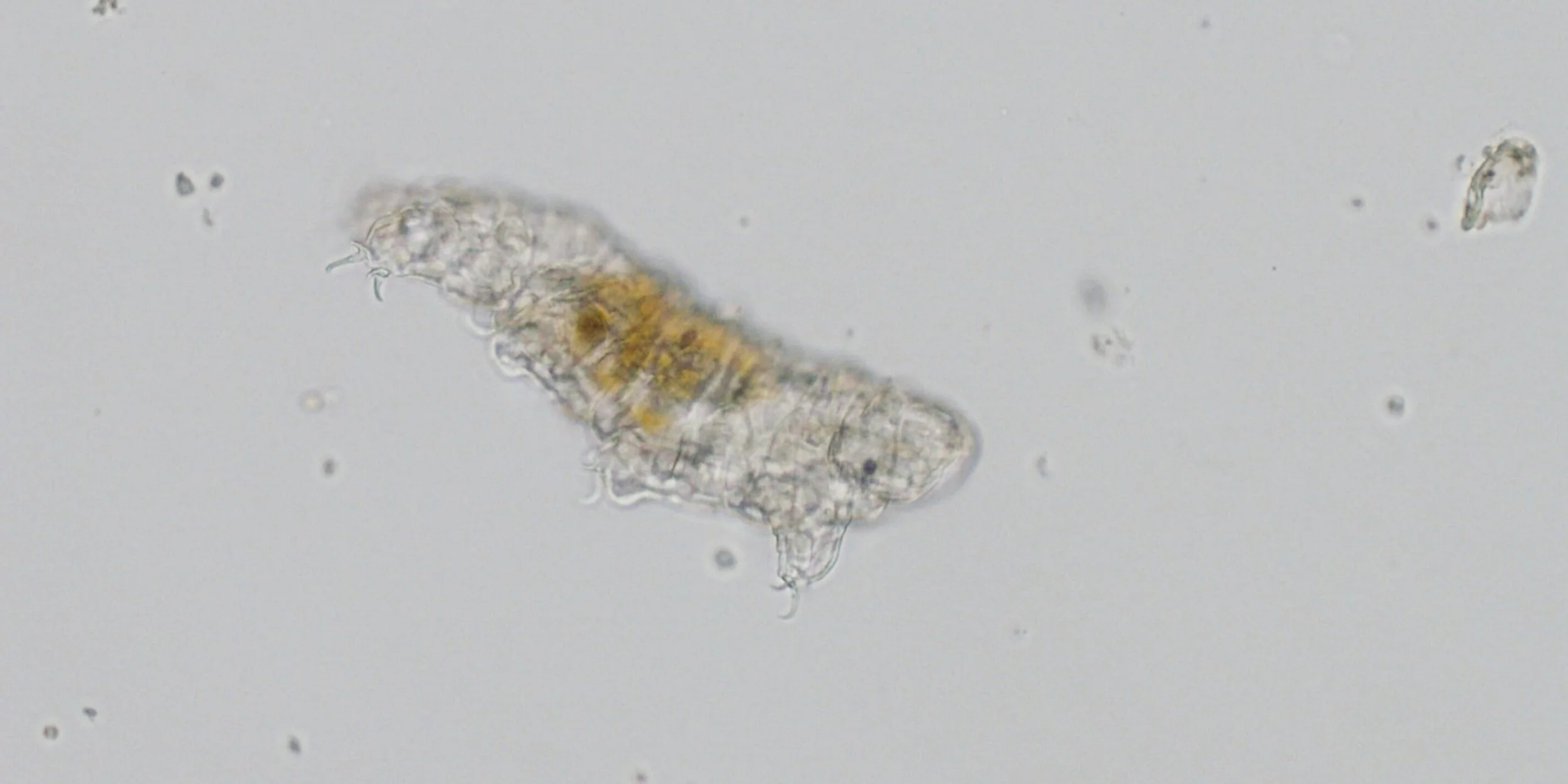SYMBIONT
Sensitises the viewer to the delicate interplay of the human and non-human dimensions of micro-habitats and micro-organisms, encouraging a mutually beneficial approach to co-existence which echoes the evolutionary principle of symbiosis.
Video overview of Symbiont installation (detail)
Artist, Marta Ferracin, at Symbiont observing the lichen and moss growing on stone populated by tardigrades (detail)
Symbiont video showing the microscopy magnification of tardigrades and of the cryptobiosis phenomena, filmed at the University of Western Australia during the SymbioticA art residency (extract)
Multimedia living biofield
Symbiont (2021) is a multimedia installation which transforms the Eden Gardens stairwell space into a ‘living biofield’. The limits of ordinary perception are overcome by shifting the unseen world of lichens and tardigrades—micro-organisms which are just half a millimetre long —into macroscopic view.
These ancient, resilient lifeforms are symbiotic in nature, and serve a critical role in maintaining the integrity of our broader ecosystem.
In Symbiont Ferracin sensitises the viewer to the delicate interplay of the human and non-human dimensions of micro-habitats, encouraging a mutually beneficial approach to co-existence which echoes the evolutionary principle of symbiosis.
The Symbiont video captures the life of tardigrades, commonly known as water bears. Tardigrades coexist in a symbiotic relationship with the microorganisms that live on lichens.
Both tardigrades and lichens play an important role in maintaining the wellbeing of the ecosystem through monitoring pollution, generating micro-habitats, and increasing biodiversity.
In the laboratory, Ferracin has extraordinarily filmed a tardigrade performing the cryptobiosis phenomenon; an adaptive biological response triggered to overcome dry environments and extreme temperatures.
At just half a millimetre long, tardigrades are invisible to the human eye. Symbiont shifts this unseen, phenomenal world into macroscopic focus.
The beginning and end of the video shows the tardigrade contracting its body to slow down water loss, transforming into a ‘tun’, a microball, by packaging itself with a specific technique to prevent tangling or breaking when the process is inverted with the arrival of rain or intake of water.
Artwork details
| Artwork | Symbiont (2021-2022) |
| Material | Mixed media, acrylic discs and rings, UV prints, lichens on rocks, single channel video, digital screen, soundscape |
| Dimensions | 300(L) x 300(W) x 600(H) cm |
| Duration video | 20:00 mins (loop) |
| Exhibition |
Eden Unearthed 2021 - 2022
Eden Gardens, Macquarie Park, NSW, AU 01 november 2021 - 22 april 2022 |
| Links | Willoughby City Council TO DO PDFcatalogue |
Credits
Soundscape
Dialectic-Delgira soundtrack extract (2019); and Marta Ferracin field recording (2021)
Microscopy facilitators
Alysia Hubbard - CMCA, UWA; Guy Ben-Ari - SymbioticA - Biological Art, UWA
Tardigrade facilitator
Alan Pickhaver - RMIT University VIC
Photos and video
Brian Rapsey; Corey Rankin; courtesy of the visitors
Research support project
Creative Australia
Provision of UWA scientific laboratory art in residence
SymbioticA - Biological Art
Provision of Eden Gardens Macquarie Park stairwell site
Simon and Anna Ainsworth
© Marta Ferracin 2025 Website by Natalia
Installation assistant Christopher Verheyden
















